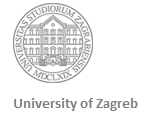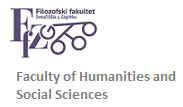Course title: Idiomatic and Stylistic Features of the Croatian Language
Course coordinator: Prof. Anita Peti-Stantić, Department of South Slavic Languages and Literatures
Instructors: Prof. Anita Peti-Stantić, Dr. Ivana Bašić
ECTS credits: 5
Language: Croatian
Duration: 1 semester (winter)
Status: mandatory
Form of instruction: two contact hours of lecture and two contact hours of seminar
Enrollment requirements: The students must be enrolled in the 1st semester of graduate studies.
Exam: written
Course description: The students will improve their knowledge of Croatian normative grammar and orthography, as well as become familiar with functional styles and their features and markers in contemporary Croatian language. They will be able to make subtle distinctions in the use of language resources and linguistic devices in accordance with the requirements of specific functional styles and the communication situation as a whole.
Objectives: To enable the students to gain knowledge of stylistics, normative grammar, orthography, pragmatics and semantics. To contribute to the development of their communication competence in Croatian and to the adoption of principles applicable in communication in other languages.
Reading:
ORTHOGRAPHIC MANUALS:
1. Babić, S.-Finka, B.-Moguš, M. (1996) Hrvatski pravopis. Zagreb: Školska knjiga.
2. Hrvatski pravopis (2007) Badurina, L., Marković, I., Mićanović, K. Zagreb: Matica hrvatska.
GRAMMAR BOOKS:
1. Barić, E. – Lončarić, M. – Malić, D. – Pavešić, S. – Peti, M. – Zečević, M. – Znika, M. (1995) Hrvatska gramatika. Zagreb: Školska knjiga.
2. Silić, J. and Pranjković, I. (2005) Gramatika hrvatskoga jezika: za gimnazije i visoka učilišta. Zagreb: Školska knjiga.
DICTIONARIES:
1. Anić, V. (1991) Rječnik hrvatskoga jezika. Zagreb: Novi liber.
2. Hrvatski enciklopedijski rječnik (2002) Matasović, R. et al. Zagreb: Novi Liber.
OTHER:
1. Hrvatski jezični savjetnik. ur. Hudeček, L.-Mihaljević, M.-Vukojević, L. (1999). Zagreb: Institut za hrvatski jezik i jezikoslovlje-Pergamena-Školske novine.
2. Hrvatski jezik u XX. stoljeću (2006) ed. Hekman, J. Zagreb: Matica hrvatska.
OPTIONAL READING:
1. Kovačević, M.-Badurina, L. (2001) Raslojavanje jezične stvarnosti. Rijeka: Izdavački centar.
2. Silić, J. (2006) Funkcionalni stilovi hrvatskoga jezika. Zagreb: Disput.
3. Škiljan, D. (2000) Javni jezik. Zagreb: Izdanja Antibarbarus.
COURSE SCHEDULE
TOPICS:
- Space and time in language: a single language ~ several languages, geographic space ~ virtual space, astronomical time ~ virtual time, changes in language.
- Sociolinguistic approaches to language phenomena exemplified by different language situations.
- Croatian language as a system. Standard Croatian language. Standard language norms.
- Norms and normization. Normative handbooks. Orthographic manuals and dictionaries. The relationship between the orthographic manuals, grammar books and dictionaries. Advisory handbooks. Discussion on language politics and self-censorship.
- Standard and non-standard forms of language use. Analysis of specific problems (i.e. the relation between stylistically marked and unmarked lexemes, loanwords and internationalism, sequence of tenses, word order, and etc.).
- Public language. Responsibility in public language. Theses on the relation between the public and private language, with special emphasis on the areas of standard language use, mostly related to the functions of public language. The issue of responsibility towards the public word, and the issue of the status of standard language.
- Official language and its place in public communication. Discussion on the relation between the public and official language – bills, public statements (politicians, actors, artists, spokespersons).
- Stratification of language. Each functional style necessary for the understanding and using standard language on the academic level (scientific, journalistic, and administrative and business style) will be dealt with separately, with special focus on the language of the media and the form and structure of scientific and professional papers. Mandatory and optional language editing.



